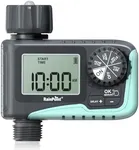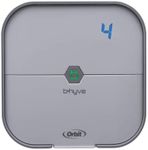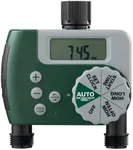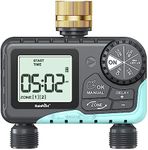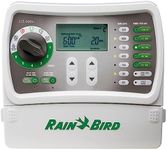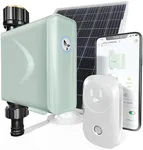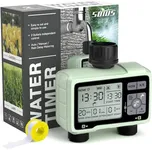Buying Guide for the Best Automatic Watering Timer
Choosing the right automatic watering timer can make a significant difference in maintaining a healthy garden or lawn with minimal effort. An automatic watering timer allows you to set specific times for your irrigation system to turn on and off, ensuring your plants get the right amount of water without over or under-watering. When selecting an automatic watering timer, consider the following key specifications to find the best fit for your needs.Number of ZonesThe number of zones refers to how many separate areas or sections of your garden or lawn the timer can control independently. This is important because different plants or areas may have different watering needs. If you have a small garden, a timer with 1-2 zones may be sufficient. For larger gardens or lawns with diverse plant types, you might need a timer with 4 or more zones. Choose a timer that matches the complexity and size of your irrigation system.
Programming FlexibilityProgramming flexibility refers to how customizable the watering schedules are. This includes the ability to set different start times, durations, and days of the week for watering. More advanced timers offer greater flexibility, allowing you to tailor the watering schedule to the specific needs of your plants and local climate conditions. If you have a variety of plants with different watering requirements, look for a timer with high programming flexibility. For simpler needs, a basic timer with fewer options may suffice.
Weather SensingWeather sensing features allow the timer to adjust the watering schedule based on current weather conditions, such as rain, temperature, and humidity. This is important for conserving water and preventing over-watering. Some timers come with built-in sensors, while others can be connected to external weather stations. If you live in an area with variable weather, a timer with weather sensing capabilities can be very beneficial. For regions with more stable climates, this feature may be less critical.
Power SourceAutomatic watering timers can be powered by batteries, solar energy, or a direct electrical connection. The power source affects the convenience and reliability of the timer. Battery-powered timers are easy to install and portable but require regular battery changes. Solar-powered timers are eco-friendly and low-maintenance but may not work well in shaded areas. Electric timers are reliable and can handle more complex systems but require a nearby power outlet. Choose a power source that fits your garden setup and maintenance preferences.
Ease of UseEase of use refers to how user-friendly the timer is, including the simplicity of programming and the clarity of the display. A timer with a clear, intuitive interface and easy-to-follow instructions can save you time and frustration. If you are not tech-savvy, look for a timer with straightforward controls and a simple display. For those comfortable with technology, more advanced timers with app control and additional features might be appealing.
DurabilityDurability is about how well the timer can withstand outdoor conditions, such as exposure to water, sunlight, and temperature fluctuations. A durable timer will last longer and require less maintenance. Look for timers made from high-quality, weather-resistant materials. If your timer will be exposed to harsh conditions, prioritize durability to ensure it continues to function properly over time.
